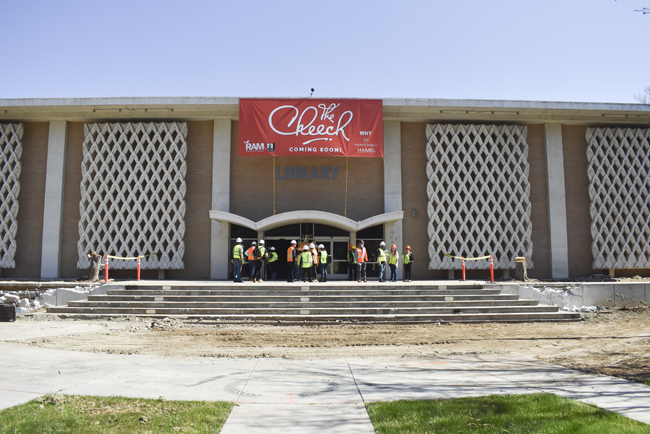Museum officials say an influential and rare permanent space dedicated to prolific Chicano art and culture –possibly the nation’s first and largest permanent collection of Mexican American Art opened Saturday in Riverside, California.
The Cheech Marin Center for Chicano Art & Culture, or ‘The Cheech’ as it’s called, houses nearly 500 paintings, drawings, and sculptures donated by comedian, actor, and art collector Cheech Marin, one-half of the legendary comedy duo Cheech and Chong.
The inaugural exhibition, Cheech Collects, weaves a story of Marin’s journey as an art collector and features around 100 works.
“My heart is swelling at this point, man. This is a dream that I never dared dream of, having a museum dedicated to Chicano art. It’s the first one in the world,” Marin told NPR.
Artistic Director María Esther Fernández told USA TODAY she can’t recall another institution with a permanent collection of Chicano art on view. However, it isn’t easy to be certain that The Cheech is the only permanent space or largest collection.
Fernández attributes this to the fact that Chicano art has been mostly ignored by the art world, in history departments and mainstream museums. The center’s mission is to help fill in some of the informational gaps, Fernández said.
“Chicano art to me … it speaks to a people, their American experience, and has grown to adopt visual markers from other movements,” Fernández said.
“But it’s developed its kind of visual language. And what’s needed because of the marginalization in the art world is more art history and more scholarly research to unpack this.”
Marin said the center is a major step forward in highlighting Chicano art worldwide. The third-generation Mexican American has built his massive art collection since the 1980s. More than 40 artists ha, like Marin,d strong roots in the Los Angeles area, s”I’m so excited to share my passion with the rest of the world. There’s something in here for everyone,” Marin said.
The 61,420-square-foot building also features a multipurpose auditorium, a film screening room, and an artist-in-residency center.
“We hope that this building and this collection and this community participation will be a beacon for everybody else around the country to redefine inclusion finally,” Marin said during a dedication ceremony on June 16.
“My motto has always been that you can’t love or hate Chicano art unless you see it,” Marin said. “And now people will have a place always to see it”
What is Chicano art?
According to the museum, Americans of Mexican descent popularized Chicano art – which came to be known as “the art of struggle, protest, and identity” – in the late 1960s. The “El Movimiento,” or the Chicano Movement, heavily influenced artists, who were often civil rights activists.
“The crusade for social justice prompted many Mexican Americans, and those who identified as Chicanos, to create art that spoke of self-determination and perseverance for a population that was – and to some degree, continues to be – disenfranchised,” a museum statement said.
Artists used their works to advocate foseveralof human rights issues, political representation, farmworker rights, and education reforms.
Rasquachismo – a concept developed by art historian Tomás Ybarra-Frausto which describes Chicano art’s aesthetics–refers to artists’ themes using ordinary materials to create creative and innovative works.
“Rasquachismo is the celebration of “making do,” and can be seen in brightly colored houses, a shrine of plastic flowers, paintings on velvet, or a wall or fence adorned with found objects, pieces of plastic, or odds and ends,” a museum statement said.
Marin said that today, Chicano art could be both political and non-political.
“It can be highly personal. But I’ve learned over the years that Chicano art reveals the sabor (flavor) of the community.”
Nearly 62% of the nation’s overall Hispanic population, about 37.2 million people, are Mexican immigrants or Mexican Americans, according to a 2019 Pew Research Center report.
Camille Fine is a trending visual producer on USA TODAY’s NOW team. She loves making pizza, photographing friends, and spoiling her loving cat, Pearl.
